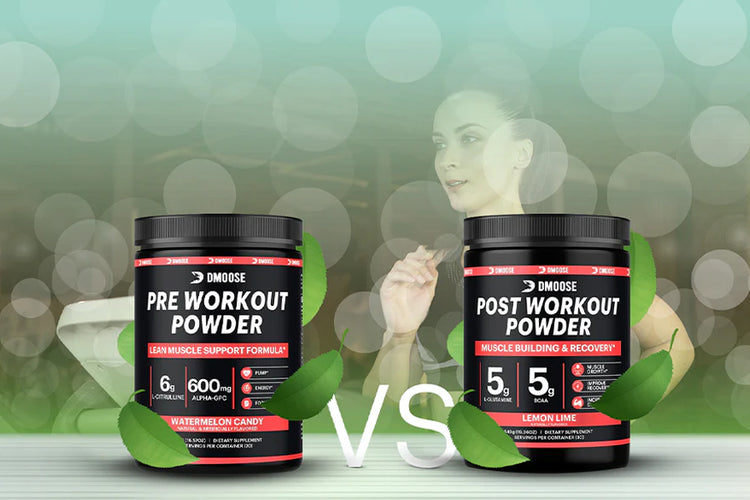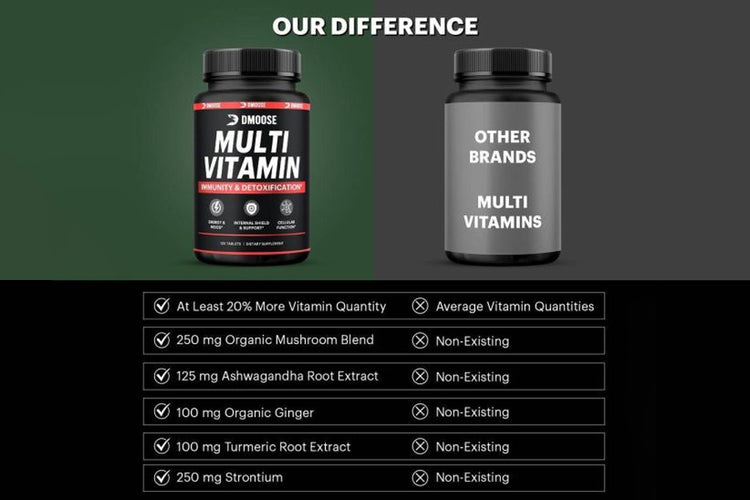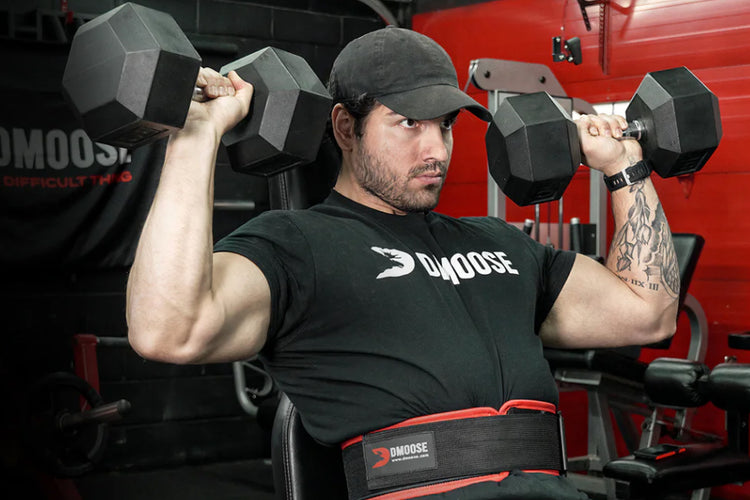In the depths of a bustling gym, amidst the clattering of weights and the rhythmic hum of treadmills, there stood a man named Ethan. He was no stranger to the world of fitness, having spent years honing his physique and pushing his limits. But recently, he found himself craving a new challenge-a way to bridge the gap between strength and endurance, to unlock a level of performance he had yet to tap into.
Enter hybrid training, a cutting-edge approach that seamlessly blends the best of both worlds-strength, and endurance. Intrigued by the concept, Ethan delved into the world of hybrid training, seeking to unlock its secrets and unleash his full potential. As he embarked on this journey, Ethan discovered a whole new realm of possibilities.
With hybrid training, he discovered the ability to build raw strength while simultaneously improving his cardiovascular fitness. He no longer had to choose between heavy lifting or long-distance running-he could have the best of both worlds.
Through carefully curated workouts, Ethan challenged his body in new and exciting ways. He combined compound lifts like squats and deadlifts with high-intensity interval training, pushing his muscles to the brink and igniting his cardiovascular system. The result was a harmonious fusion of strength, power, and endurance that transformed his physique and supercharged his performance.
But hybrid training was more than just physical gains for Ethan. It challenged him mentally and emotionally, pushing him out of his comfort zone and testing his limits. The blend of strength and endurance workouts forced him to confront and surpass his weaknesses, fostering a sense of resilience and self-belief that permeated all aspects of his life.
As Ethan shared his hybrid training journey with friends and fellow gym-goers, he became a beacon of inspiration. Others, too, sought to explore this newfound path, eager to experience the transformative power of hybrid training for themselves. Together, they formed a community of like-minded individuals, supporting and encouraging one another on their quest for strength, endurance, and personal growth.
So, if you find yourself yearning for a challenge, longing to transcend the boundaries of conventional fitness, it's time to embrace the world of hybrid training.
Join Ethan and countless others as they embark on a journey of discovery, breaking barriers, and redefining what it means to be truly fit. Get ready to unleash your full potential and experience the exhilarating synergy of strength and endurance like never before. The world of hybrid training awaits, ready to propel you to new heights.
Related Article: 60-Minutes Explosive Workout: Perfect Abs With Cardio and Resistance
What is Hybrid Training and Its Benefits?

In the realm of fitness, where specialization often reigns supreme, a new approach has emerged, challenging traditional boundaries and pushing the limits of human performance.
Enter hybrid training-a revolutionary method combining the best elements of strength and endurance training to create a synergy that transcends conventional fitness routines.
At its core, hybrid training is the art of blending different training modalities to achieve a comprehensive and well-rounded level of fitness. It seamlessly integrates strength-focused exercises with cardiovascular conditioning, delivering a unique and powerful training experience.
Unlike traditional training programs that prioritize either strength or endurance, hybrid training embraces the idea that both aspects are equally important. It recognizes that strength alone is not sufficient to excel in endurance activities and vice versa. By combining the two, athletes and fitness enthusiasts can unlock a whole new level of performance.
According to the American College of Sports Medicine (ACSM), we should do a minimum of 150 minutes of moderate-intensity aerobic activity or 75 minutes of vigorous aerobic activity per week and strength training two or more days weekly.
Hybrid training offers a myriad of benefits that extend beyond the physical realm. It cultivates versatility, enabling individuals to adapt to various physical challenges and activities. Whether tackling a tough obstacle course race, participating in team sports, or simply living an active lifestyle, hybrid training equips individuals with the tools necessary to excel across different domains.
Builds Muscle
Hybrid training can help you build muscle. A study suggests that HIIT combined with weightlifting resulted in more muscle growth than HIIT or weightlifting alone. In the study, participants did three HIIT workouts per week and three weightlifting sessions per week. The HIIT-weightlifting group gained more muscle mass than the HIIT group, which just did HIIT, and the weightlifting group, which only lifted weights.
Helps Burns Fat
Hybrid training can also help you burn fat. A study found that a group of women who did a hybrid workout consisting of 30 minutes of cardio and 30 minutes of strength training three times per week for 12 weeks lost more body fat than those who did cardio or strength training alone.
Related Article: The Fat Incinerator: Complete Body Transformation Home Workout Program
Helps Build Muscle Strength and Endurance
Hybrid training uses a combination of workout methods but not to help a runner be stronger or a powerlifter to have better cardio.
— Tobi Emonts-Holley (@tobi_emonts) January 26, 2023
It's about being a hybrid of the two and becoming an all-round, functional athlete. It's about improving strength and endurance simultaneously.
Hybrid training can help build both muscle strength and endurance. A study published in the Journal of Environmental Research & Public Health found that older adults who did a hybrid workout had greater muscle endurance than those who just did cardio or strength workouts alone.
Related Article: How to Get Strong Lean With This 12-Week Navy Seal Workout Program
Increases Bone Density
Hybrid training can also help increase bone density. A study published in a PLoS journal suggests that a group of individuals following a hybrid workout consisting of cardio and strength training resulted in increased bone density in their hips and lumbar spine compared to those who just did cardio or strength training alone.
Prevents Cardiovascular Disease
Hybrid training can also help prevent cardiovascular disease. According to a research study, HIIT combined with weightlifting resulted in lower blood pressure, heart rate, and improved cholesterol levels, compared to HIIT or weight lifting alone. The HIIT-weightlifting group significantly decreased their low-density lipoprotein (LDL) cholesterol levels.
Nutrition for Hybrid Training

When achieving optimal results in hybrid training, a well-rounded and balanced nutrition plan is essential. Proper nutrition provides the fuel necessary to support the demands of strength training and endurance activities, allowing your body to thrive and perform at its best. Here are key considerations to keep in mind when it comes to nutrition for hybrid training:
Macronutrient Balance: Strike the Right Ratio
Achieving the right balance of macronutrients-protein, carbohydrates, and fats-is crucial for hybrid training. Protein is pivotal in muscle repair and growth, and strength development. Aim for a protein intake of around 0.7-1 gram per pound of body weight.
Include complex carbohydrates like whole grains, fruits, and vegetables to support endurance training. Including healthy fats in your diet, such as those found in avocados, nuts, and olive oil, can provide long-lasting energy and promote good health.
Timing is Key: Pre- and Post-Workout Nutrition

Fueling your body before and after workouts is vital for optimal performance and recovery. Before training, consume a balanced meal or snack with carbohydrates and protein. This will provide the necessary energy and nutrients for your workout. After training, prioritize post-workout nutrition to replenish glycogen stores and kickstart muscle recovery.
Boost your workouts and optimize recovery with DMoose's precision-engineered pre- and post-workout supplements. Before hitting the gym, fuel your performance with DMoose Pre Workout Powder, a pre-workout powerhouse packed with ingredients like caffeine, beta-alanine, and citrulline malate.
Experience heightened energy, enhanced focus, and increased endurance to crush your workouts like never before. After intense training, support your muscles with DMoose Post Workout Powder, a post-workout formula designed to replenish glycogen stores and kickstart muscle recovery. With a blend of premium protein sources, essential amino acids, and key nutrients, the post-workout by DMoose helps muscle repair, reduces soreness, and fuels muscle growth.
Hydration: Stay Hydrated for Optimal Performance
Hydration is crucial for both strength and endurance training. Adequate water intake supports optimal performance, nutrient absorption, and overall health. Before, during, and after your workouts, make sure to hydrate with water or electrolyte-rich beverages. Monitor your fluid intake throughout the day, aiming for at least 8 cups of water, and adjust according to your activity level and sweat loss.
Micronutrient Power: Vitamins and Minerals

It's important not to ignore vitamins and minerals when engaging in hybrid training. These nutrients are necessary for energy production, muscle function, and overall health. To ensure you get a wide range of micronutrients, consume various nutrient-dense foods. You can also consider taking high-quality multivitamins, such as DMoose Multivitamins or targeted supplements, but prioritize getting nutrients from food sources whenever possible.
Individualized Approach: Listen to Your Body
While general guidelines can provide a foundation, listening to your body and making adjustments based on your unique needs and goals is essential. Pay attention to how different foods and eating patterns impact your energy levels, performance, and recovery.
Experiment with different meal timing strategies, food combinations, and portion sizes to find what works best. Consulting with a registered dietitian or nutritionist can provide personalized guidance tailored to your specific needs and optimize your nutrition plan for hybrid training.
Here is a sample day of eating for hybrid training:
Breakfast: ½ cup rolled oats, 1 sliced banana, ½ cup blueberries, 1 tablespoon pumpkin seeds, 2 tablespoons ground flaxseed, 1 tablespoon natural peanut butter, ½ cup unsweetened non-dairy milk, and 1 teaspoon cinnamon.
Snack: Post-workout protein shake containing 1 cup unsweetened non-dairy milk, 1 cup frozen strawberries, 1 whole banana, 1 cup leafy greens of your choice (spinach, kale, etc.), 2 tablespoons of Chia seeds, and 1 whole Medjool date, pitted.
Lunch: 1½cup of dry lentils, ½ cup black bean, 1 cup steamed broccoli, ½ cup cherry tomatoes, ½ avocado whole, 2 cups spinach, juice of one whole lemon, and ¼ cup organic salsa.
Snack: ½ cup Greek yogurt with berries
Dinner: ½ cup brown basmati rice, 150 g boneless, skinless chicken breast, 1 cup chopped cauliflower, 100 g raw sweet potatoes, ½ cup chickpeas, ½ red cabbage, and 1 Tbsp. Lemon Tahini dressing.
In conclusion, nutrition is vital in fueling the synergy of strength and endurance in hybrid training. By prioritizing a well-balanced macronutrient intake, proper pre-and post-workout nutrition, hydration, micronutrient-rich foods, and an individualized approach, you can optimize your performance, support muscle growth and repair, and enhance overall well-being. Embrace the power of nutrition as a critical component of your hybrid training journey, and unlock your body's full potential.
Related Article: Pre-Workout Nutrition-What to Eat Before a Workout
How to Get Started With Hybrid Training

If you're interested in starting a hybrid training program, there are a few things you should keep in mind:
Find a Routine That Works for You: There are a variety of hybrid routines. The first step is finding exercises that you enjoy. This will help you stick to your routine and see results. You can try different things to see what works best for you, like working out in nature, running around a track, using weights at the gym, or doing bodyweight exercises at home. Find what works best for you and make a workout routine based on your individualized needs and preferences.
Set Realistic Goals: It's important to set realistic goals for yourself. This will help you stay on track and motivated throughout your hybrid training journey.
Prioritize Rest and Recovery: Rest and recovery are essential to any training program. Be sure to listen to your body and take days off when needed, as no workout regimen is complete without taking time off between sets for rest and recovery. Your muscles repair and get stronger during the recovery phase. Take one day off from exercise or focus on active recovery (walking, hiking, cycling, and swimming) two days a week. This will provide your body and brain with a much-needed break from training.
Be Flexible in Your Workout Routine: One of the benefits of hybrid training is its adaptability. As your fitness goals change, you can adjust your workout routine accordingly.
You could jog or run slowly for 30 to 45 minutes on Monday, Wednesday, and Friday. On Tuesday and Thursday, you could focus on working out your muscles on Tuesday and Thursday with strength training workouts. You could also try high-intensity hybrid workouts, which combine calisthenics, weightlifting, and running three or four days a week.
Start Slow and Increase Workout Volume Over Time: When starting a hybrid training program, it's important to start slow and gradually increase your workout volume. This will help you avoid injury and burnout. Begin with two or three workouts each week and gradually increase until you can do four or five a week without compromising quality.
Now that you know the basics of hybrid training, it's time to start! Choose a routine that works for you and start seeing results.
Sample Hybrid Training Program

The sample hybrid training workout utilizes powerlifting and body-building exercises to maximize muscle growth. Aim to keep the intensity high and your weights challenging. If there are fewer reps in your set, go heavy.
Hybrid Training Chest and Shoulders Workout
- 12 reps of incline dumbbell presses
- 10 reps of flat dumbbell presses
- 8 reps of decline dumbbell presses
- 15 reps of shoulder presses
- 12 reps of lateral raises
- 10 reps of front raise
- 8 reps of rear delt flyes
- 60-second plank hold (or as long as you can hold it for).
This workout aims to perform each exercise with good form and without rest in between exercises. Once you have completed all 8 exercises, rest for 1-2 minutes and then repeat the circuit 2 more times.
Hybrid Training Leg Workout
- 12 reps of squats
- 10 reps of lunges
- 8 reps of leg presses
- 15 reps of calf raise
- 12 reps of hamstring curls
- 10 reps of glute bridges
- 8 reps of single-leg deadlifts
- 60-second wall sits (or as long as you can hold it for).
Once you have completed all 8 exercises, rest for 1-2 minutes and repeat the circuit 2 more times.
Hybrid Training Back Workout
- 12 reps of lat pulldowns
- 10 reps of seated rows
- 8 reps of pull-ups
- 15 reps of inverted rows
- 12 reps of face pull
- 10 reps of Superman hold (or as long as you can hold it for).
Once you have completed all 6 exercises, rest for 1-2 minutes and then repeat the circuit 2 more times.
Hybrid Training Arm Workout
- 12 reps of bicep curls
- 10 reps of triceps extensions
- 8 chin-ups
- 15 dips
- 12 close-grip push-ups
- 60-second plank hold (or as long as you can hold it for).
Once you have completed all 6 exercises, rest for 1-2 minutes and repeat the circuit 2 more times.
FAQs
1. Is it possible to train for both strength and endurance?
Yes. It's called "hybrid training." And it's not only possible, but it has some unique benefits you can't get from strength or endurance training alone. Combining strength and endurance training gives you some of the best of both worlds. You get the strength benefits of lifting weights plus the endurance benefits of running or cycling. This is because your muscles learn how to use both aerobic and anaerobic energy systems so that you can generate more power for a more extended period.
Plus, hybrid training is excellent for building muscle mass and burning fat. So it is ideal if your goal is to build strength and endurance!
2. What are hybrid exercises?
Hybrid exercises are a combination of two or more exercises. You can use them to target different muscle groups or add an extra challenge to your workout.
For example, a hybrid exercise that combines a lunge and a bicep curl would work the glutes, hamstrings, and biceps. And a hybrid exercise that combines a squat and an overhead press would work the quads, hamstrings, glutes, shoulders, and triceps. If you're looking for an extra challenge in your workout, try incorporating some hybrid exercises into your routine!
3. Are hybrid workouts effective?
Yes, hybrid workouts are effective. They can help you achieve fitness goals in less time than if you were to do each type of workout separately. For example, by doing bodyweight exercises and short cardio bursts, you can burn more calories and tone up faster than if you were to do cardio or weight training.
Hybrid workouts offer various other benefits, such as increased calorie burn, improved heart health, and better overall fitness. If you're looking to get the most out of your workouts in the shortest time, then hybrid workouts are a great option!
Final Thoughts
Embarking on the journey of hybrid training is an exciting and transformative step towards achieving a well-rounded level of fitness that combines strength and endurance. By incorporating a strategic blend of strength-focused exercises and cardiovascular conditioning, you can unlock a new realm of performance and athleticism.
Remember to start gradually, focusing on proper form and technique, and gradually increase the intensity and complexity of your workouts over time. Stay consistent, listen to your body, and make adjustments as needed to ensure a sustainable and enjoyable training experience.
Embrace the synergy of strength and endurance, push your boundaries, and witness the incredible transformations that hybrid training can bring to your body and overall fitness. Get ready to redefine your limits and embark on an extraordinary fitness journey like never before. Let hybrid training become your key to unlocking your full potential and achieving a well-rounded, powerful, and resilient body.
Reading List
Article Sources
- Afshari, Khashayar, et al. "Effect of Hybrid FES Exercise on Body Composition during the Sub-Acute Phase of Spinal Cord Injury." PLOS ONE, vol. 17, no. 1, Jan. 2022, p. e0262864. PLoS Journals, https://doi.org/10.1371/journal.pone.0262864.
- Martins, Fernanda Maria, et al. "High-Intensity Body Weight Training Is Comparable to Combined Training in Changes in Muscle Mass, Physical Performance, Inflammatory Markers and Metabolic Health in Postmenopausal Women at High Risk for Type 2 Diabetes Mellitus: A Randomized Controlled Clinical Trial." Experimental Gerontology, vol. 107, July 2018, pp. 108-15. ScienceDirect, https://doi.org/10.1016/j.exger.2018.02.016.
- Ramírez-Vélez, Robinson, et al. "High-Intensity Interval- vs. Resistance or Combined- Training for Improving Cardiometabolic Health in Overweight Adults (Cardiometabolic HIIT-RT Study): Study Protocol for a Randomised Controlled Trial." Trials, vol. 17, June 2016, p. 298. PubMed Central, https://doi.org/10.1186/s13063-016-1422-1.
- Schroeder, Elizabeth C., et al. "Comparative Effectiveness of Aerobic, Resistance, and Combined Training on Cardiovascular Disease Risk Factors: A Randomized Controlled Trial." PLOS ONE, vol. 14, no. 1, Jan. 2019, p. e0210292. PLoS Journals, https://doi.org/10.1371/journal.pone.0210292.
- Vitale, Kenneth, and Andrew Getzin. "Nutrition and Supplement Update for the Endurance Athlete: Review and Recommendations." Nutrients, vol. 11, no. 6, June 2019, p. 1289. PubMed Central, https://doi.org/10.3390/nu11061289.
- Wang, Ziyi, et al. "The Effectiveness of a Hybrid Exercise Program on the Physical Fitness of Frail Elderly." International Journal of Environmental Research and Public Health, vol. 19, no. 17, Jan. 2022, p. 11063. www.mdpi.com, https://doi.org/10.3390/ijerph191711063.
- "The Effectiveness of a Hybrid Exercise Program on the Physical Fitness of Frail Elderly." International Journal of Environmental Research and Public Health, vol. 19, no. 17, Jan. 2022, p. 11063. www.mdpi.com, https://doi.org/10.3390/ijerph191711063.
- Willis, Leslie H., et al. "Effects of Aerobic and/or Resistance Training on Body Mass and Fat Mass in Overweight or Obese Adults." Journal of Applied Physiology, vol. 113, no. 12, Dec. 2012, pp. 1831-37. journals.physiology.org (Atypon), https://doi.org/10.1152/japplphysiol.01370.2011.














